Stay a while and listen, and I shall share with you the beginnings of my journey as a retro handheld enthusiast. My interest in this unique hobby started a few years ago when I began a new job. This job was a good 4-hour car ride away from my home, and I had to leave my family behind to start. It was a sacrifice, but it was definitely in our best interest in the long run. I came home to see my family nearly every weekend for the next three months while my wife managed the selling of our home and finishing things up there.
The Journey Begins with PSP
![]()
To save wear and tear on our vehicles, I rode the bus to get back. Every weekend. I decided I needed something to pass the time and make those rides less miserable. I hadn’t owned a portable console since the original Game Boy, but I decided I needed something similar yet not quite so antiquated.
I was not new to the world of emulation, however, as I’ve been emulating since the late 90’s. I grew up with Mac computers, and I still remember when the SNES emulator Silhouette came out and all the secrecy and rumors surrounding it. Those were good times, but back to the tale at hand.
I settled on a PSP first. It was a great little device. I played a bunch of that unexplored library and I dabbled in some of the emulation stuff. SNES performance wasn’t great. The UI for the emulators was often clunky, but usable. Managing PBP files for PlayStation games was tedious, and there were some games that just didn’t work. I spent hours getting a working PBP of Brave Fever Musashi for instance. And there were others that I never could make work.
Still, it was fun and made the rides far more bearable. Eventually, that PSP stopped working. I’m not sure exactly what happened, but I think the card reader on it went out. Regardless, I’d decided I needed something else. I wanted something more refined, less clunky. I wanted something built specifically for my intended purposes rather than being hacked to do so. A portable emulation device.
Deciding Where To Go Next
I’d been following the SBC subreddit around that time and had recently seen some people posting these weird Chinese knockoff handhelds that ran emulators to play classic games. I became more curious and started to research.
Like many newcomers to the hobby, I suspect, I first found Retrododo who reviewed these devices. I discovered that there was already a wide selection of devices available, and rumors of newer, more powerful devices just around the corner were prevalent. I don’t know how many hours I spent reading reviews, watching videos, and gobbling information. There were so many devices, from Anbernics and Bittboys to LDKs and Retroids.
I’d settled on two possible devices for what I wanted. The RG351P looked like a device that could fill my needs and more. However, the Retroid Pocket 2 was also coming out soon, and the rumors around it looked very promising. One of those devices would surely be the one I wanted long term. Oh, how naive I was to think a single device would be enough.
Settling On the Bittboy
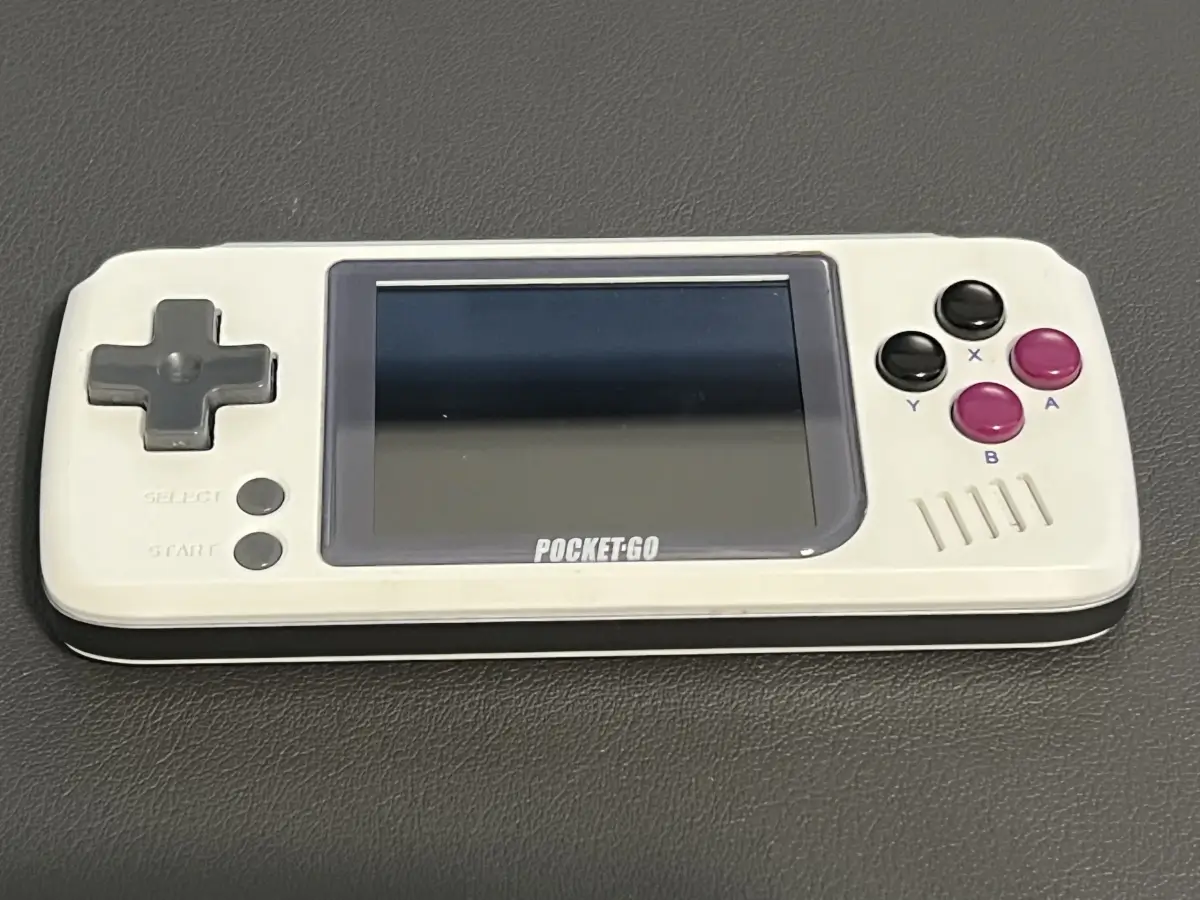
Bittboy Pocket Go lying flat
I decided I’d first buy a cheap one, just to test the waters and see what the quality was like before making a more serious investment. I was drawn to the Bittboy Pocket Go. It was cheap, and $30 was a safe testing price. But what I really was interested in was the build quality. If a $30 device could satisfy those expectations, surely the more expensive ones would be that much better.
I chose the Pocket Go because the Retrododo article praised the build quality. It was a small, 2.4” screen device. Small enough to fit in that weird mini pocket at the top of my jeans. You know, the one that Steve Jobs taught us was for the iPod shuffle. It was also capable. Powerful enough to run everything up to PlayStation. The colors were vibrant and it came with exchangeable buttons letting you customize the device.
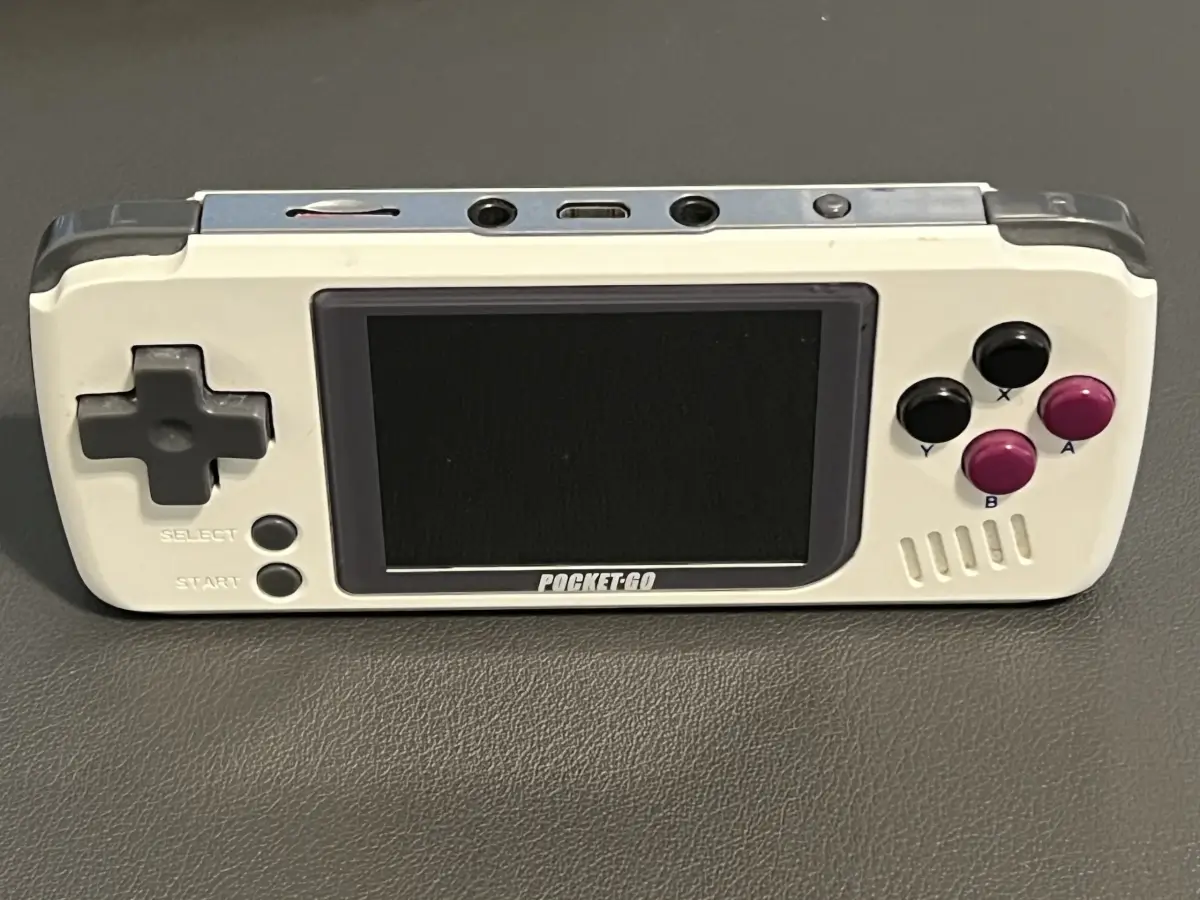
Bittboy Pocket Go standing up
It could look more like a Game Boy or a European SNES depending on which buttons you used. It included a headphone jack (which was somewhat rare at the time, believe it or not), TV out, and a speaker. Screen tearing was an issue, and probably the biggest negative, but I figured for $30, that was probably inevitable anyway.
I bought it and waited the agonizing six weeks or so for my device to arrive. During that time, I learned of the Miyoo custom firmware that was available, which also fixed the screen tearing. I immediately downloaded it and got it all set up on an SD card. It sat for weeks on my desk, waiting far more patiently than me for the device to arrive.
It Finally Arrives
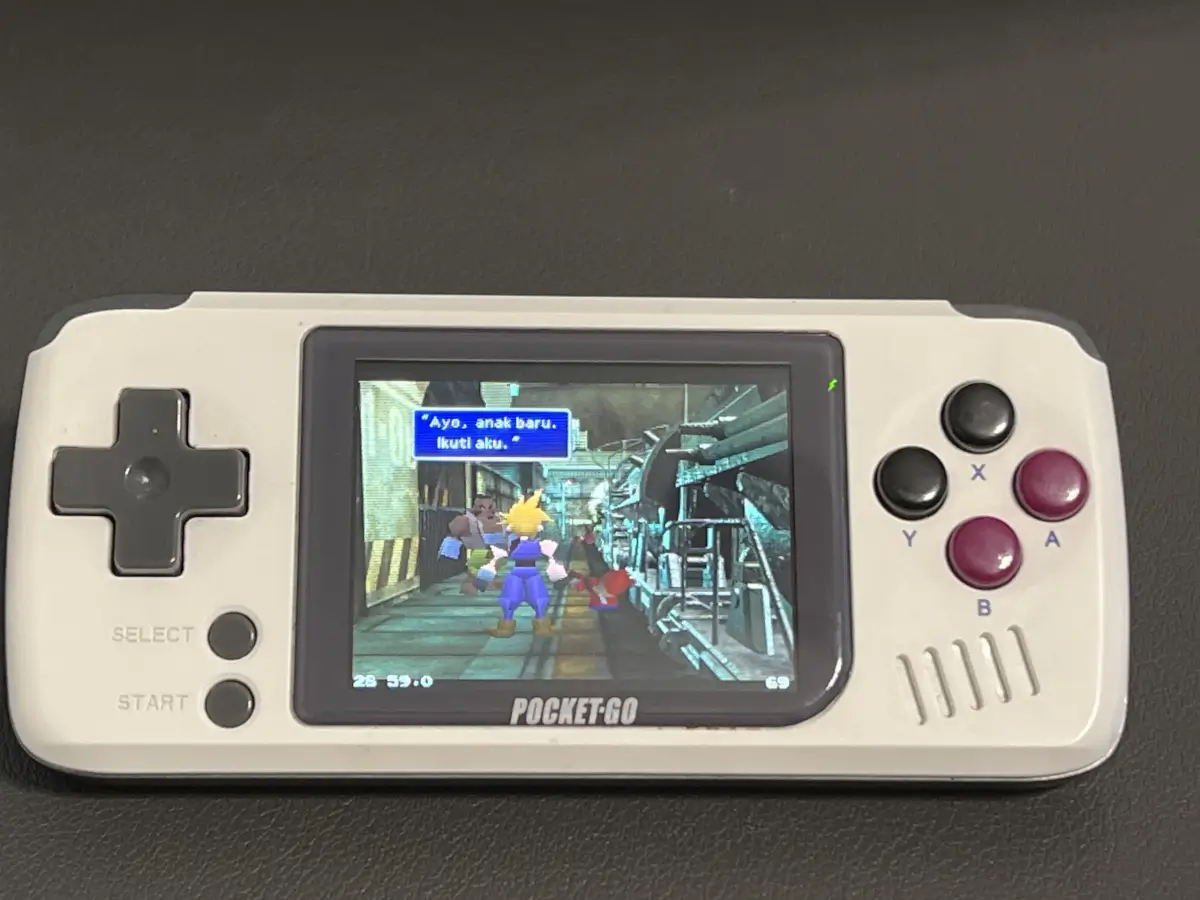
Bittboy Pocket Go Gameplay
When the Pocket Go finally arrived, I tore into the box like a crazed toddler who had just grasped the meaning of presents. It looked great. The matte plastic felt good in my hands. The d-pad was also quite good, shockingly, although I wouldn’t have expected it to be bad. I had no idea how many devices had bad D-pads, but this one just felt good.
It was far from perfect. It had its weird quirks. For starters, the headphone jack was odd. You can push the plug in too far and lose stereo sound. You have to gently pull it out just a bit to get stereo again, and bumping the plug can upset the delicate balance of the force or something. Additionally, the speaker volume is controlled by hotkeys while the headphone volume uses the wheel, and they are completely independent. But most of these were small complaints. I mean, what did I expect for $30?
I put the machine through its paces. I finished the GBA port of Phantasy Star, Puyo Pop, and a handful of other shorter NES and SNES games. I played Landstalker for the Genesis and nearly finished it. I was amazed that it could almost handle FF7. The slowdown during battle swirls was too much, but other than that it actually ran. I brought the device on a couple of drives back to the motherland and the battery life was fair. It couldn’t quite last the whole drive, but it was close. Performance-wise, I was blown away.
Disaster Strikes
And then, the true test happened, quite by accident. While standing on a brick patio, the unthinkable happened. The mini-machine slipped through my fingers. I watched in slow-motion horror as my newfound toy careened toward certain destruction. What would break? Surely something had to. The screen? Perhaps the shell would separate, splintering into several pieces. With a sickening thud, the Pocket Go bounced off the bricks a few times before coming to rest, screen side up, thankfully.
The screen appeared to be fine. It displayed a yellow-bricked tunnel and the dungeon music for Phantasy Star blared through the surprisingly loud speaker. I gingerly picked it up and began an inspection. Miraculously, the only damage was a minor scuff on one of the corners. I was blown away.
Moving Onwards and Upwards
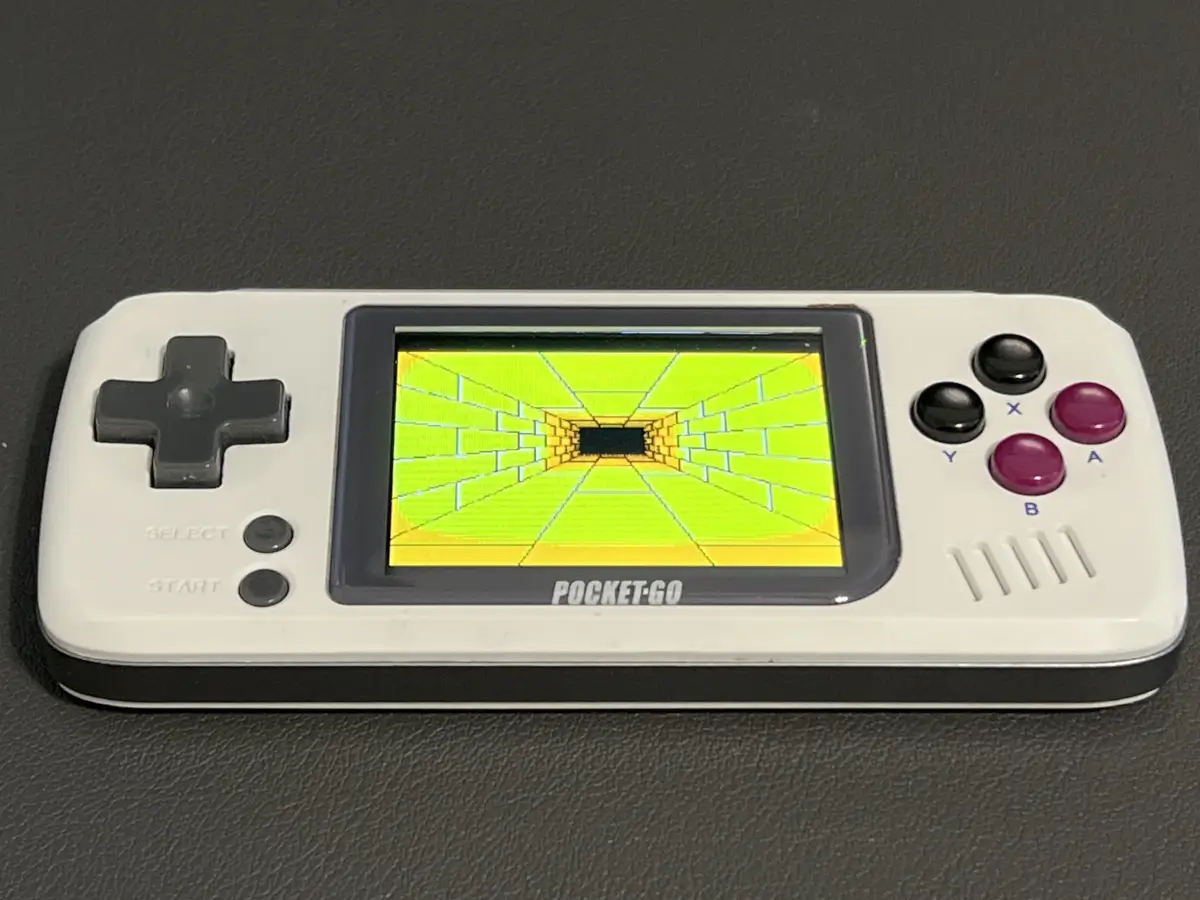
More Bittboy Pocket Go Gameplay
At that moment, the Pocket Go had sold me on the retro handhelds market. The quality exceeded my expectations. The UI was far less cumbersome than the PSP for emulation. I could play most of the same games on this much cheaper device. And I’d rediscovered the usefulness of portable consoles.
My days of riding a bus for hours every weekend have mercifully ended, but I still find more uses for the portable gaming devices I’ve become so fond of. The pick-up and play nature of them is just fantastic. I mostly use mine now at night in bed while the wife sleeps, or when we go on vacations during the drive or whatever. I’ve since moved on to bigger and better devices, eventually buying first the Retroid Pocket 2 and then Anbernic RG351P and more, but the Pocket Go will always be a special device for me.
What did you think of this article? Let us know in the comments below, and chat with us in our Discord!
This page may contain affiliate links, by purchasing something through a link, Retro Handhelds may earn a small commission on the sale at no additional cost to you.
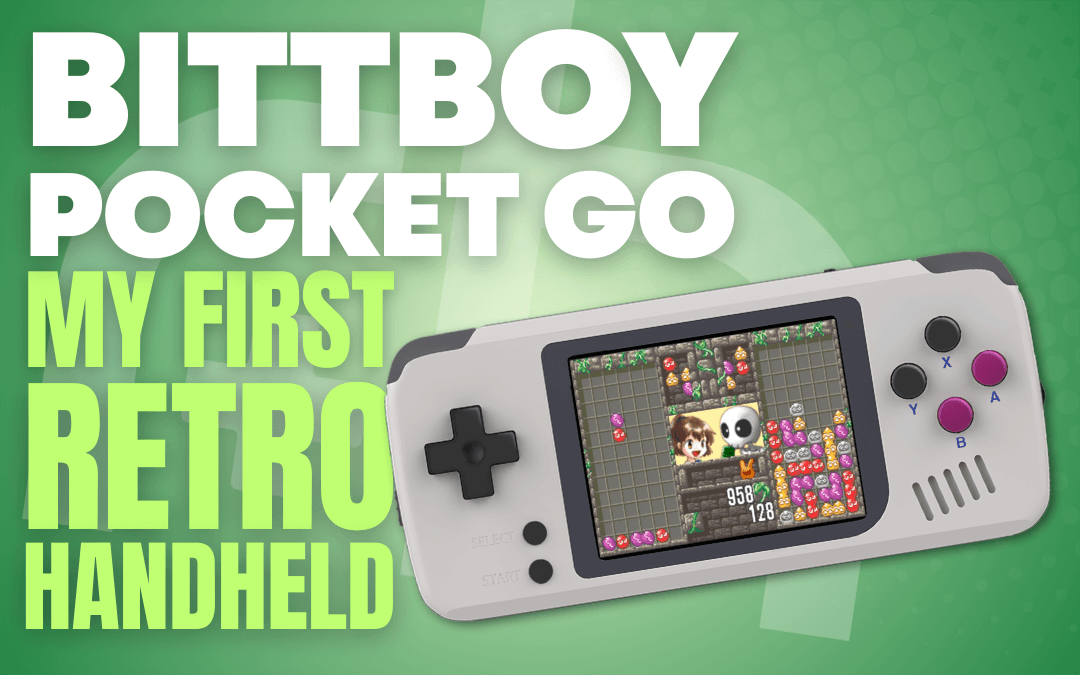
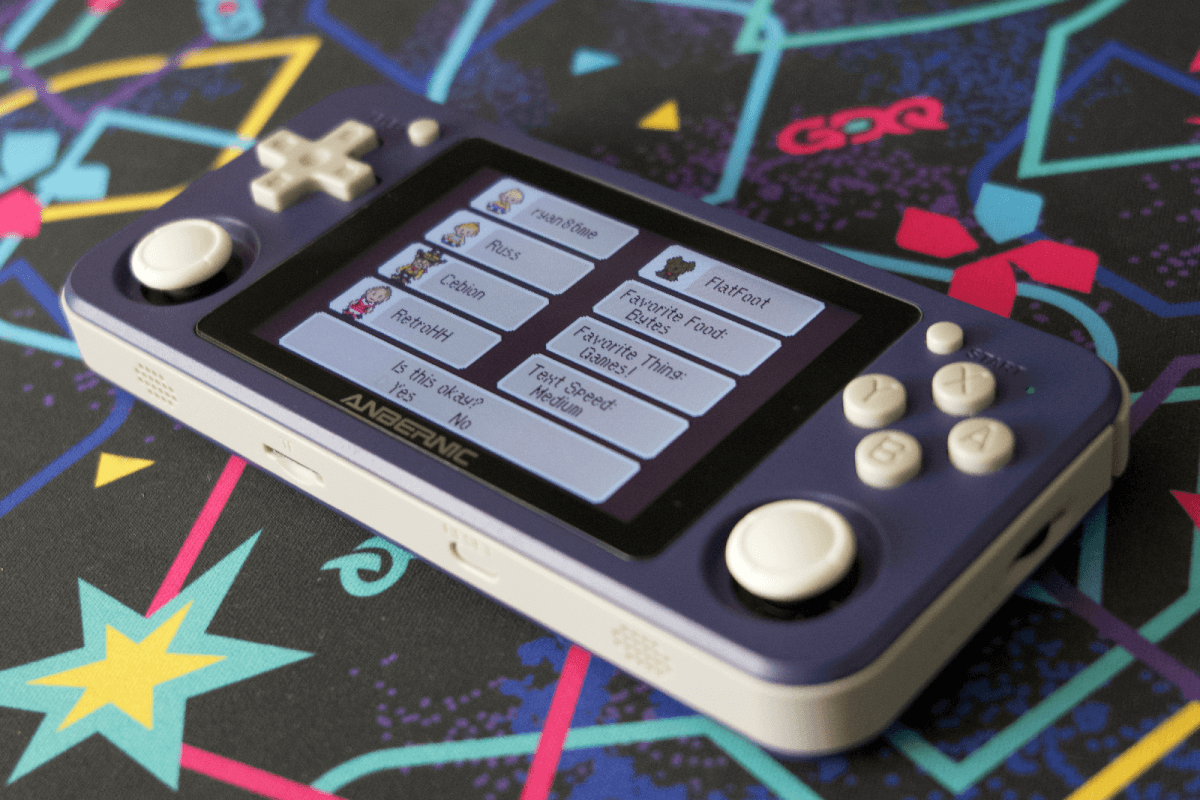
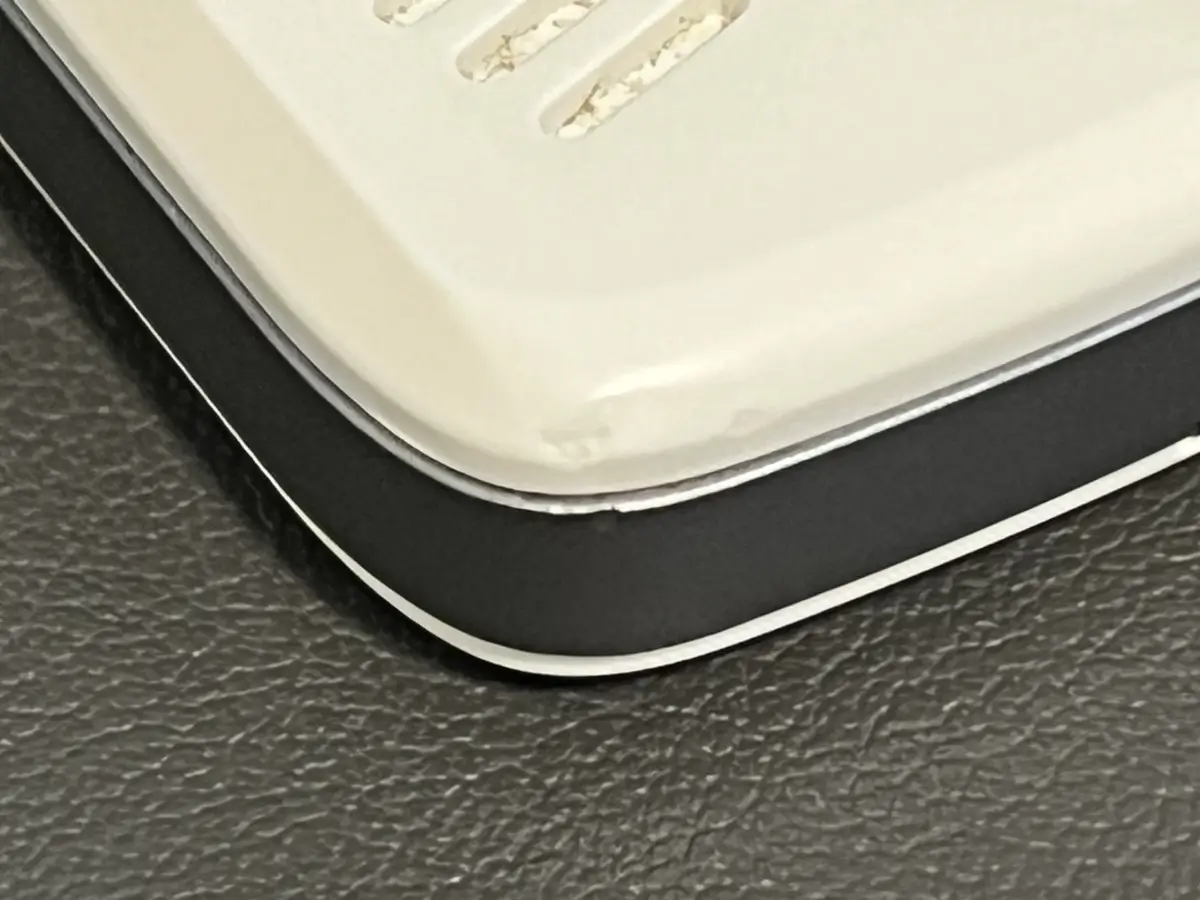
The was my first pickup too. Many devices in, I’ve come back to it over the last few weeks to mess with it here and there. Still kinda shocked at how well it does so many things.
It really is a very cost effective little device. It was available for a long time too. I recommended it quite a bit to people looking to just dip their toe into the water.
Artikel bagus bro. Tetap semangat dalam menulis. Saya tunggu artikel keduanya